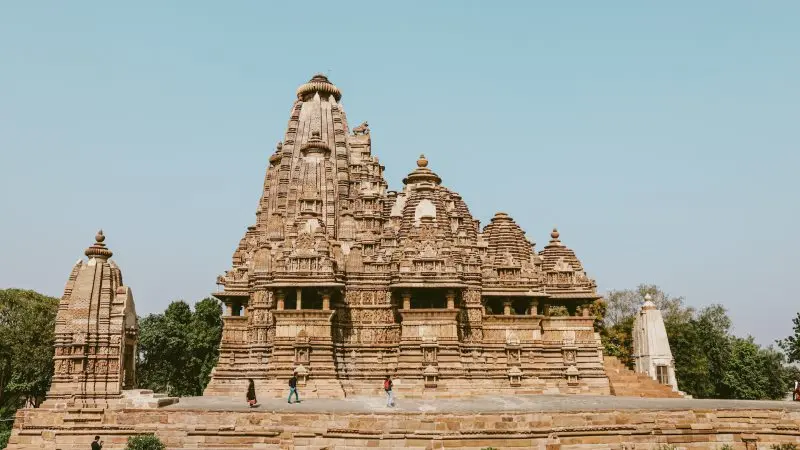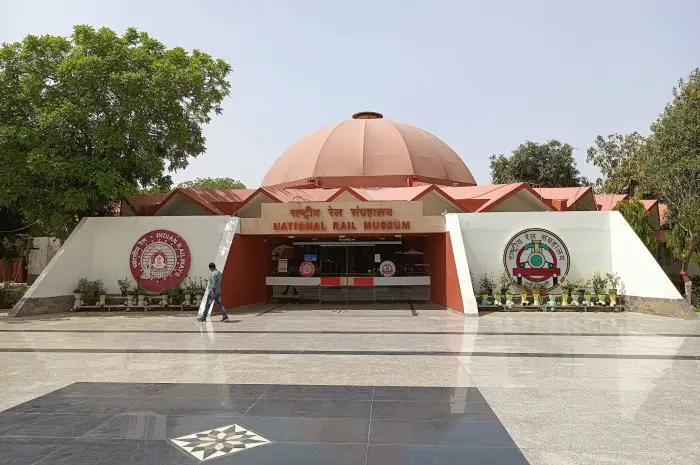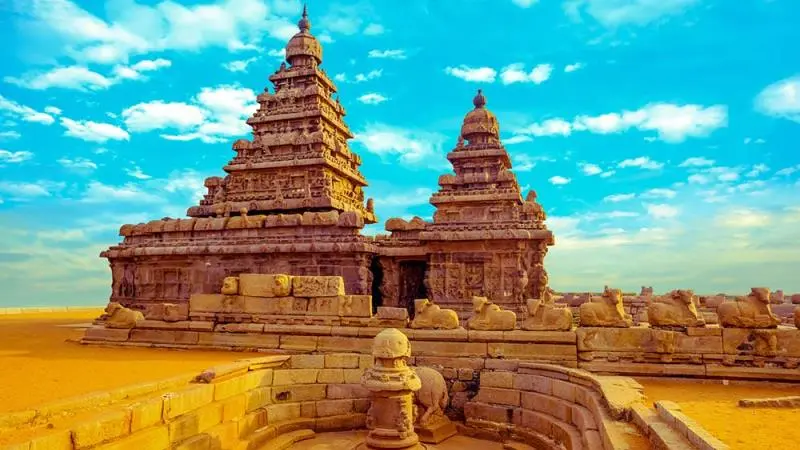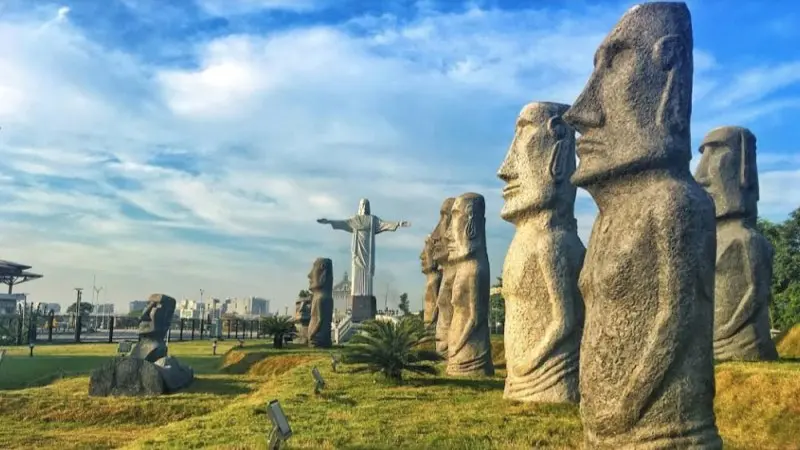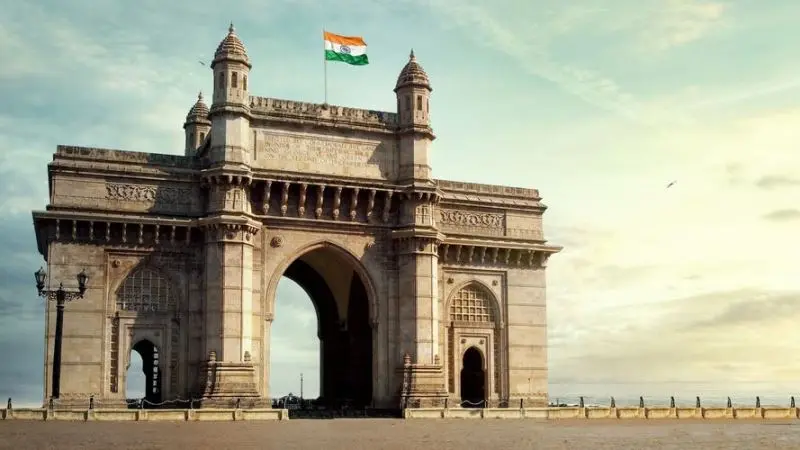| Entry Fee: 40 INR; Location: Check Map Address: Khajuraho, Madhya Pradesh 471606, India. |
Located in the heart of India, in the state of Madhya Pradesh, Khajuraho is renowned worldwide for its exquisite collection of Hindu and Jain temples. The temples, dating back to the medieval period, are a remarkable testament to the architectural brilliance and artistic imagination of the time. Renowned for their intricate sculptures and stunningly detailed carvings, the temples of Khajuraho present an aesthetic and spiritual feast for visitors.
Owing to their historical, cultural, and artistic significance, the Khajuraho Group of Monuments was designated a UNESCO World Heritage Site in 1986. The UNESCO citation refers to them as “an outstanding example of Indian art,” that provide “a vivid impression of courtly life in the 10th and 11th centuries.” Today, they stand as a significant symbol of India’s ancient heritage and architectural prowess.
1. History of Khajuraho
1. Origins and Patronage of Khajuraho
The Khajuraho temples were constructed between the 10th and 12th centuries during the reign of the Chandela dynasty, a powerful Rajput confederation. The Chandelas were fervent patrons of art and architecture, and Khajuraho, which served as their cultural capital, benefited immensely from their patronage.
2. Cultural and Religious Context of the Region
The temples at Khajuraho were built as a celebration of life, love, and divinity, reflecting the tolerant and pluralistic practices of the time. The presence of both Hindu and Jain temples in close proximity indicates the peaceful coexistence of the two religions during this period.
3. Explanation of the Name ‘Khajuraho’
The name ‘Khajuraho’ is derived from the Sanskrit words ‘khajura’, meaning date palm, and ‘vahaka’, meaning bearer. The region was once densely forested with date palm trees, which is reflected in its name. The local lore also suggests that the original temple walls might have had two golden date palm trees as gatekeepers, lending the name ‘Khajuraho’.
2. Description of the Khajuraho Group of Monuments
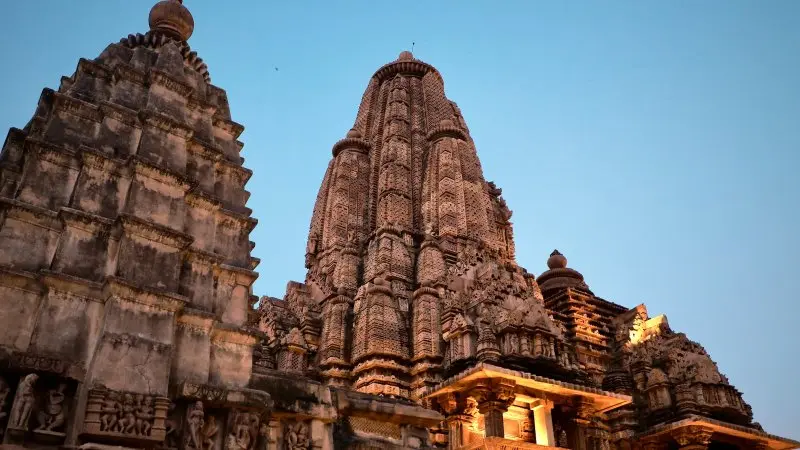
1. Number and Types of Temples
Originally, there were about 85 temples spread over a 20 square kilometer area in Khajuraho, but today only 25 remain in a well-preserved state. These temples are divided into three groups: Western, Eastern, and Southern, based on their geographical location.
2. Division into Western, Eastern, and Southern Groups
The Western group, the largest and best known, is the site of the magnificent Kandariya Mahadeva Temple. The Eastern group contains a number of finely sculpted Jain temples, including the Parsvanath Temple. The Southern group, though smaller, hosts the notable Duladeo and Chaturbhuj Temples.
3. Unique Architectural Features
The temples of Khajuraho are famous for their distinctive Nagara-style architectural symbolism and their erotic sculptures. Most temples have a sanctum sanctorum, a congregation hall, a vestibule, and an entrance porch. The temples are often built on high platforms and their exterior walls are richly adorned with intricately carved sculptures. The rising towers (Shikhara) of the temples depict the Himalayan peaks, symbolizing the abode of the gods.
3. Artistic Significance
1. Description of the Sculptures and Their Themes
The sculptures adorning the walls of Khajuraho temples depict a wide variety of themes. While they are famously known for their erotic and sensual carvings, these constitute only a small portion of the total artwork. The majority of the sculptures depict everyday activities, divine beings, mythical creatures, and scenes of war, royalty, and spirituality.
2. Significance of Erotic Sculptures
The erotic sculptures of Khajuraho, often associated with the Tantric tradition, are seen as a celebration of human desires, or ‘kama’, which is considered one of the goals of life in Hindu philosophy. Their presence on the outer walls of the temples may symbolize that one must leave their desires outside before entering the sacred space.
3. Influence on Later Art Traditions
The artistic style and iconography of Khajuraho sculptures have had a significant influence on later Indian art traditions. The perfect blend of realism and aesthetics, along with the profound symbolism, makes these sculptures masterpieces of Indian art. Even today, they inspire and influence artists, scholars, and enthusiasts worldwide.
4. Khajuraho Dance Festival
1. Overview and Significance of the Annual Festival
The Khajuraho Dance Festival is a week-long cultural extravaganza held annually against the enchanting backdrop of the Khajuraho temples. Organized by the Madhya Pradesh Kala Parishad, the festival celebrates the richness of Indian classical dance forms.
2. Types of Classical Dance Forms Showcased
The festival showcases performances by some of India’s best classical dancers in forms such as Kathak, Bharatanatyam, Odissi, Kuchipudi, Kathakali, and Manipuri. The dances, steeped in the age-old tradition of ‘Natya Shastra’, come alive in the magical surroundings of the floodlit temples.
3. Importance for Cultural Tourism
The Khajuraho Dance Festival plays a significant role in promoting cultural tourism in the region. It attracts art lovers, tourists, and culture enthusiasts from across the globe, adding to the allure of the historic site. The festival provides an opportunity for visitors to experience the vibrant cultural heritage of India in an iconic historical setting.
5. Khajuraho and Tourism
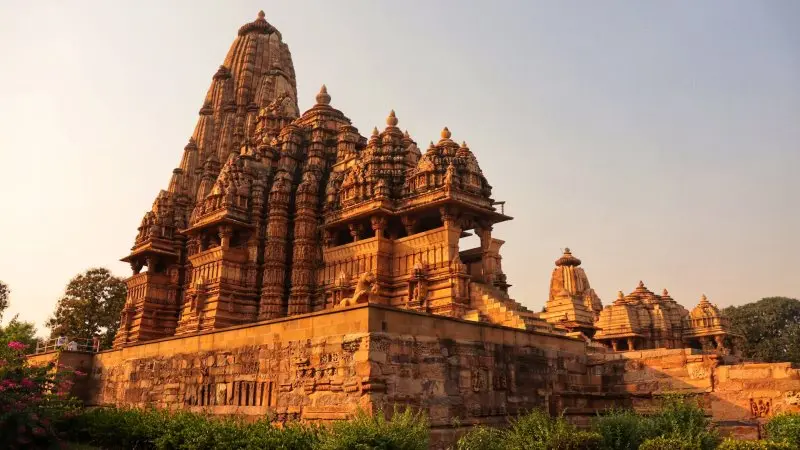
1. Importance of Khajuraho as a Tourist Destination
Khajuraho is one of the most visited tourist destinations in India, known for its rich cultural, historical, and architectural heritage. The uniquely carved temples offer a deep-dive into the artistic grandeur of ancient India, attracting history buffs, art lovers, and tourists from all over the world.
2. Nearby Attractions and Facilities for Tourists
Apart from the temples, tourists can also visit other nearby attractions like the Panna National Park, known for its wildlife, and the Raneh Falls, a natural waterfall on the Ken river. The town of Khajuraho provides ample tourist-friendly facilities, including a range of accommodation options, eateries serving local and global cuisine, and local guides for detailed temple tours. The city also has good connectivity, with the Khajuraho Airport and a railway station connecting it to major Indian cities.
Through its architectural marvels and cultural offerings, Khajuraho provides an immersive and memorable experience for tourists, making it a highlight of India’s cultural tourism.
6. Conservation Efforts
1. Challenges to Preservation
The Khajuraho temples, though well-preserved relative to many other historical sites, face several conservation challenges. These include environmental factors such as weathering and biological growth on stone surfaces, and human-induced issues like vandalism and unregulated tourist activities.
2. Efforts by Archaeological Survey of India and UNESCO
The Archaeological Survey of India (ASI), in association with UNESCO, has the primary responsibility for the conservation of the Khajuraho Group of Monuments. They undertake regular maintenance work, scientific cleaning of sculptures, and structural conservation to preserve these historic edifices.
Strict guidelines are in place to regulate tourist activities and prevent any harm to the monuments. Increasing awareness about the cultural significance of the site and the importance of heritage conservation is also a part of their ongoing efforts.
Through these conservation strategies, the aim is to ensure that the architectural brilliance and artistic grandeur of Khajuraho continue to awe and inspire future generations.
Conclusion
As one of India’s most cherished historical sites, Khajuraho is more than just a collection of ancient temples. It is a reflection of India’s rich artistic tradition, its religious diversity, and its profound spiritual philosophy. The temples, with their stunning architecture and intricate carvings, narrate a tale of a bygone era, marked by cultural efflorescence and spiritual quest.
Today, Khajuraho continues to captivate the world, not only as a testament to India’s architectural prowess but also as a destination of cultural and historical significance. Whether it is the dance festival that brings alive the ancient Indian dance forms or the enduring appeal of the temples that attract tourists from around the globe, Khajuraho’s charm is timeless.
Despite the challenges of preservation, with sustained conservation efforts, Khajuraho stands as an enduring symbol of India’s rich cultural heritage. In conclusion, a visit to Khajuraho offers an enriching journey into the past, inspiring awe and appreciation for the artistic and spiritual wisdom of our ancestors.

